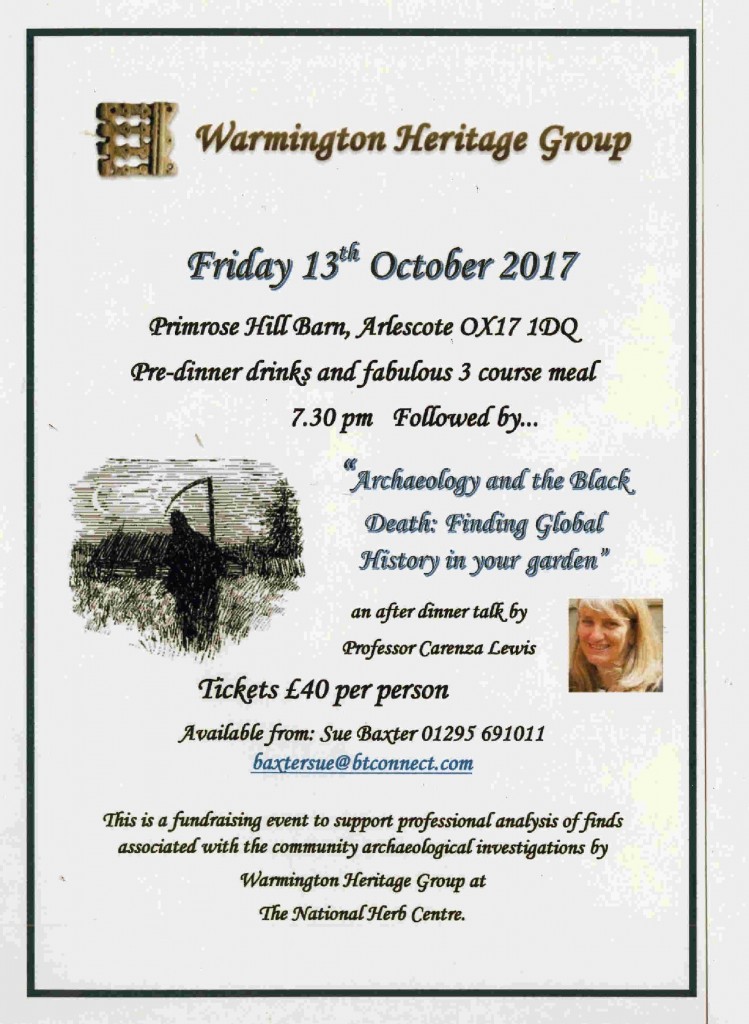Forthcoming K&DLHG events.
Friday September 15th sees our first evening talk after the summer outings: “ Rebuilding Kineton Railway Station” by Mark Reader. I hope to see you at 7.30 at the Village Hall for a fascinating talk about the reconstruction of Kineton Station as a model.
Report: the evening visit to Shipston-on-Stour 17th August
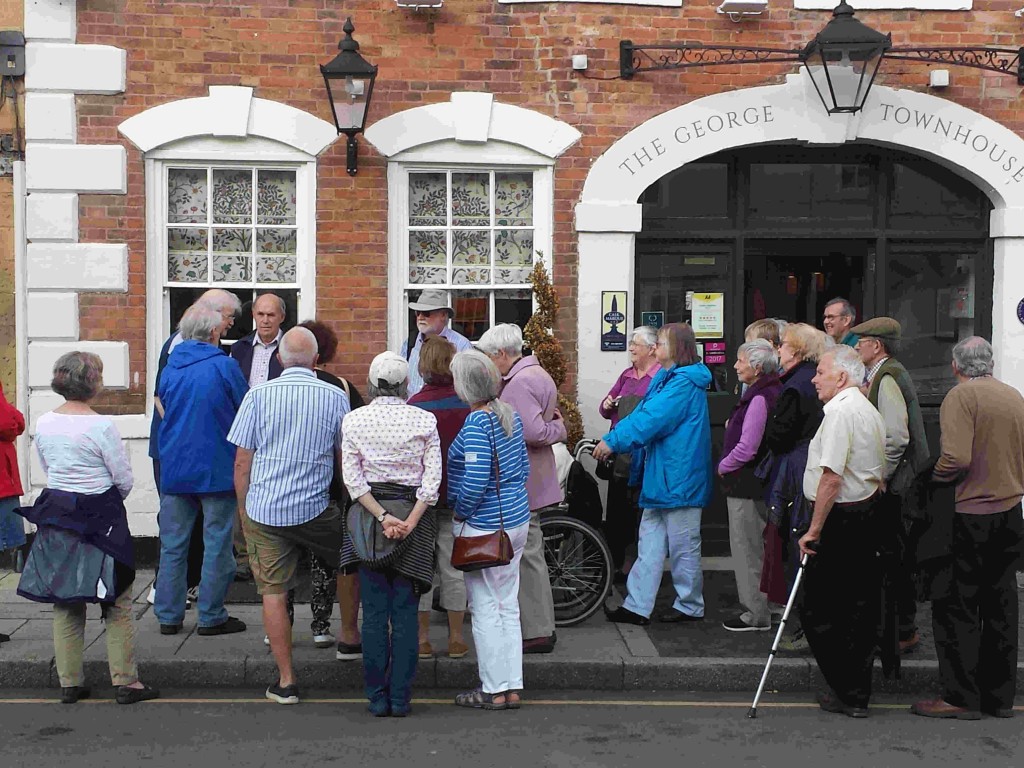
In front of the George Inn, with our backs to the Co-op
On a fine evening the usual suspects clustered around the public toilets in a Shipston car park as local expert Dick Burge gave Mike Ashley’s apologies, and a brief introduction to the history of the town. We followed him down a covered alley to emerge in the High Street – the Square. This part of the town was burnt down in the Great Fire of 1726. A timber framed building just off the Square is a rare Elizabethan survival, now a Tandoori House. In the High Street is an array of fine 18th century buildings including coaching inns, such as The George. Unfortunate 20th century insertions include the building occupied by the Co-op.
A striking feature of the town’s buildings is the number of finely carved date-stones sprinkled around, carefully conserved for the most part, and often enhanced by recent explanatory notes. The date-stones are from the late 17th century to the 1730s, but mainly before the fire. Some are on relatively modest structures, but one above a garage door, dated 1681, is certainly not in its original place. They presumably relate to a prosperous period when this was the accepted way for the more prominent townspeople to display their status. Sheep Street exhibited many examples, as well as 18th century Fire Insurance plates – possibly a case of shutting stable doors too late?
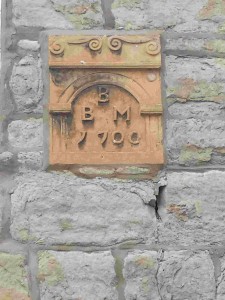 |
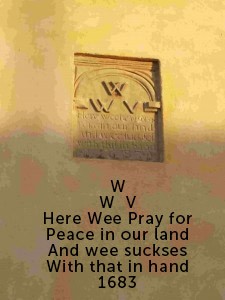 |
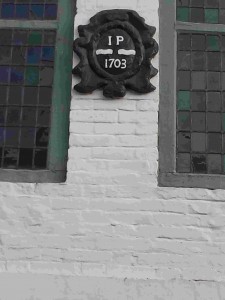 |
| Examples of local masons’ work | ||
Near the top of Sheep Street the traffic roundabout is reputedly the burial place of a suicide, denied the consolation of consecrated ground. The construction of the roundabout is supposed to have disturbed her ghost.
We contemplated a fine granite horse trough, a relic of the cattle market, before proceeding down Telegraph Street where we admired the 1960s development which blends so convincingly into the historic townscape.
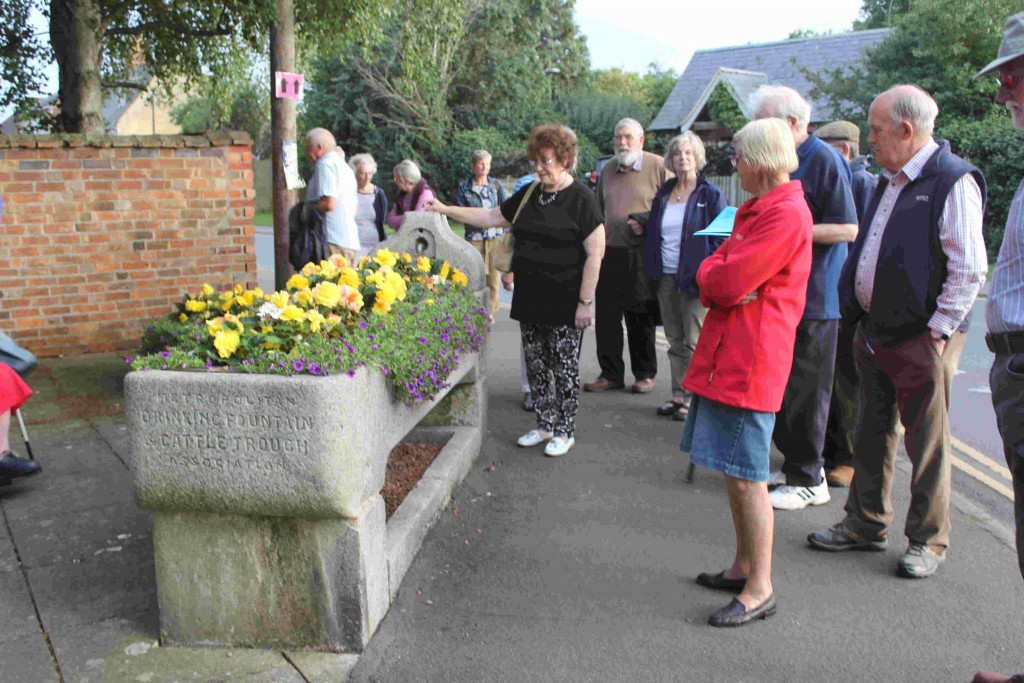
A new use for an historical feature
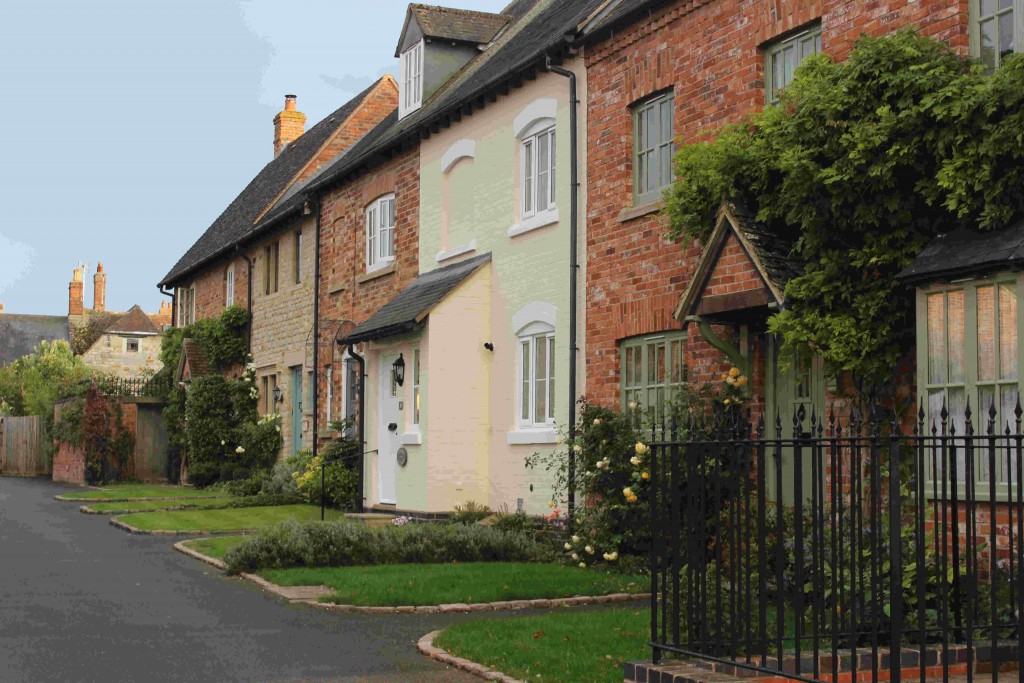
The new development at the top of Telegraph Street
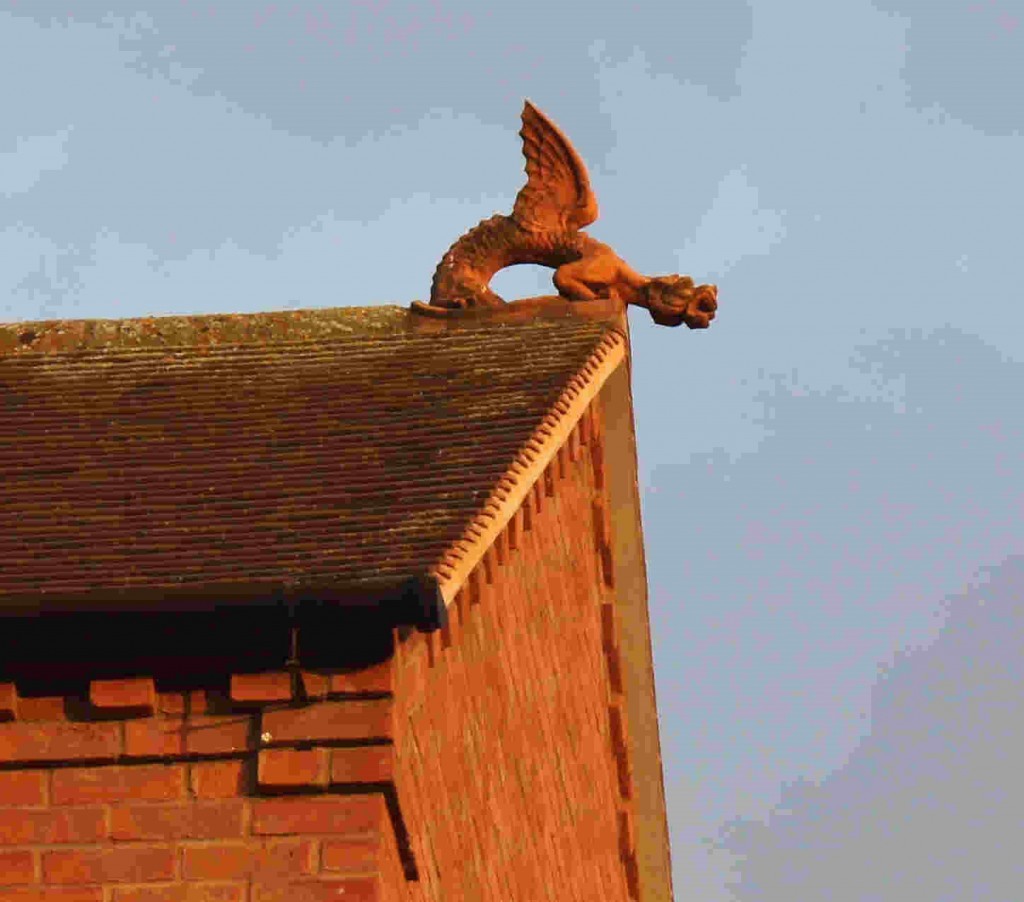
Distressed dragon escaped from Chinatown
Further down Telegraph Street unsympathetic modern developments again intruded, with one dreary brick lump only relieved by a surreal roof ornament. The plaques on the walls here warned against parking, littering, and the risk of demolishing the wall to which the notice was attached. Round the corner we admired the renovated historic toll-road milepost, while nervously noting a rainbow and the gathering clouds. Tea and cakes provided by the Shipston U3A beckoned at St Edmunds, where. Ed Jackson sat us down and gave us an excellent description of the church. It is an early work of G.E. Street and is full of the gothic details he later developed in his mature style. His original intention to demolish the 15th century tower was thankfully not approved by the church authorities.
Our thanks to Dick Burge, who gave us a superbly well-informed introduction to the town, showing us how its history and characters were still embedded in the buildings and layout, and to Ed Jackson and the U3A who ensured that our visit was rounded off in a thoroughly civilised manner.
Other Forthcoming Local Event:
Dick Burge is giving a talk about the The Stratford to Moreton-in-Marsh Tramway at 7.30 on Tues 13th at the Women’s Institute Hall, New Road, Moreton-in-Marsh.
Committee Matters
This is a new element of the Newsletter, but it seems right that the members should be kept informed of what their elected committee has been doing on their behalf, so starting with this one the first Newsletter after a Committee Meeting will include a brief update on its deliberations. We last met on the 4th September.
Your committee has been working during the summer holidays to finalise the 2018-19 talks programme and Summer 2018 outings – yes! we have to get these things sorted well in advance! We have almost completed the talks list, awaiting just one contributor to confirm. The programme will be a mix of local and wider topics delivered by enthusiasts both from within our own community and from further afield, and we hope there will be something for everyone in the course of the year. We will be able to release the list around Christmas or New Year, all being well.
Isobel is working on the potential venues for the 2018 outings. The 2017 evening visits were a great success, and we hope to have similarly stimulating trips in 2018, with a possible variation to make one of them a daytime picnic. The day trip to Stokesay Castle and Ludlow was greatly enjoyed by those who came. The day trips have sometimes proved problematic over the years. It’s not been the quality of the venues but the difficulty sometimes encountered in raising the numbers sufficiently to cover the considerable transport costs, without raising the price to the members to an amount which could deter some. We are actively considering ways to make these trips work more effectively.
The sad passing of Peter Ashley-Smith, apart from leaving the committee without a knowledgeable and obliging colleague and friend, has also brought into focus a long term issue — our archives, where to put them and how to manage them? When I became Chairman this was a matter I was concerned to address, but then there seemed to be no straightforward solution to these questions. With Peter, Gill and the Davids Beaumont and Gill and others on hand to provide answers to most queries from their own resources the matter went on the back burner. With the loss of Peter and with Gill and David Gill retired from the committee after decades of service the issue has become pressing. Gill is working with David Beaumont and our President Bob Bearman to devise a plan to ensure that the copious material collected and collated over the years by Peter and other members of the Group will remain a resource for the Group in the future.
The next Committee Meeting is on Monday 6th November.
A future event:
Friday 13th October:
Warmington Heritage Group is hosting a Dinner at Primrose Hill Barn in Arlescote to raise funds for the post-excavation work planned for the Herb Centre Excavations.
The speaker will be Professor Carenza Lewis, late of Time Team, but more recently the leader of a community scheme in East Anglia to unravel the early histories of village communities. Her topic at the dinner is “Archaeology and the Black Death: finding global history in your back garden” – a suitable theme for Friday the thirteenth!
Tickets at £40.00 can be ordered from Sue Baxter
